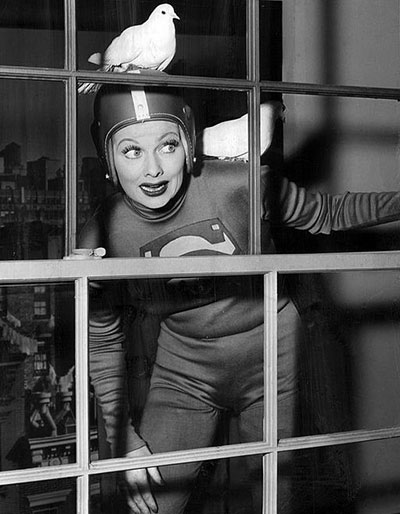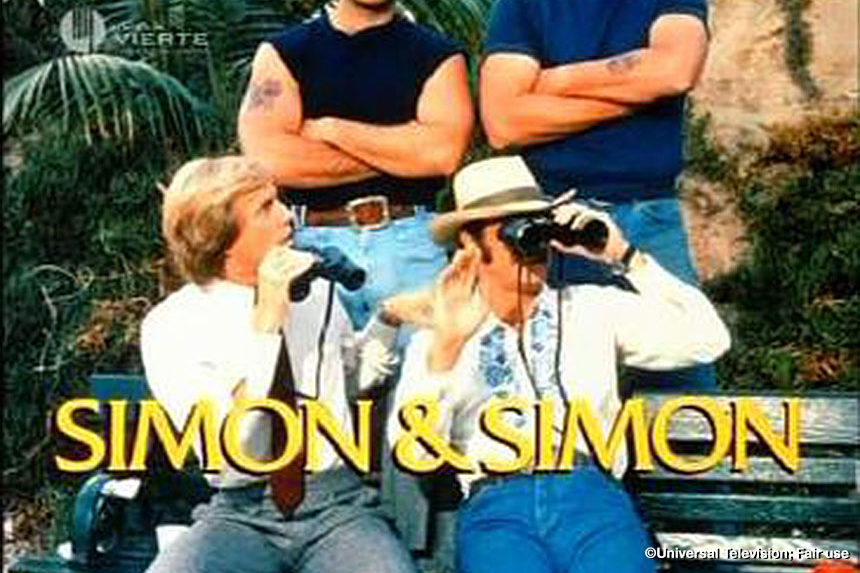The television landscape boasts more programming than ever thanks to cable, streaming, and the persistence of broadcast networks. For every two-decade-and-counting wonder like Law & Order: Special Victims Unit, there are hundreds of shows that never made it out of their first season. In between the longest and shortest-running programs are a number of familiar, even beloved, shows that had truly solid runs that lasted several years. One of those was Simon & Simon, which adapted the buddy-cop formula into a pair of distinctly different brothers operating as private investigators. For eight seasons, Rick and A.J. squabbled, solved crimes, and became part of a mini-verse of CBS shows with Magnum, P.I. at its center. Here’s a brief look at the Simons and their unique place in a practice that went from a rarity to exceedingly common: the TV crossover.
Philip DeGuere, Jr. was a TV writer and producer with a long list of genre and procedural credits. In addition to writing for shows like Baretta and Black Sheep Squadron, he also penned episodes of The Bionic Woman and wrote the 1978 Dr. Strange TV movie. DeGuere got a request from a higher-up at CBS to put together a new show using Butch Cassidy and The Sundance Kid as a kind of template. DeGuere also recalled a script that he’s read by writer Bob Shayne (remember him), which depicted squabbling detective exes. DeGuere built a concept featuring sharply contrasting brothers and got a greenlight for a pilot.
Simon & Simon Season 7 Opening (Uploaded to YouTube by ShoutFactory)
That pilot, Pirate’s Key, was shot in 1978. DeGuere cast Gerald McRaney and Jameson Parker as Rick and A.J. Simon. Rick was the laid-back, cowboy-hat-wearing, Vietnam veteran. A.J. was the slick college grad who stuck to the rules. The pair’s natural chemistry made them believable as both brothers and partners, and the pilot, while it never aired in its original form, got the show picked up. The series made its debut on November 24, 1981. The only other regular for the whole run was Mary Carver, who played their mother, Cecilia. DeGuere also brought Shayne in a writer for the show.
During its first year, Simon & Simon found itself on the ratings bubble. CBS seriously considered cancelling it. DeGuere and Shayne knew that they had a winner, but they wanted two things from the network. They asked if the show could be moved to the Thursday at 9 p.m. timeslot that followed Magnum, P.I. They also pitched doing something that wasn’t an entirely new idea, but would be done in a completely different way: a crossover.
A crossover occurs when a character from one work appears in another, but not necessarily a sequel. It’s possible that the first “modern” crossover took place when Mark Twain’s Tom Sawyer popped up in The Adventures of Huckleberry Finn. Sawyer was something of Twain’s franchise character, as he had two official sequels, the Finn appearance, and three unfinished novels. Huck does feature in all of the Sawyer books, making Twain one of the first American writers to indulge in a “shared universe.”

The form became very popular within American comics; as early as 1940’s All-Star Comics #3, National (now DC) pulled together heroes from a number of books to form the Justice Society of America. Since then, it’s become a staple of comics across all publishers. It’s probably no surprise, then, that the first official TV network crossover featured Superman. In the 1957 I Love Lucy episode, “Lucy and Superman,” Lucy met the Man of Steel, played by TV’s Superman, George Reeves. After that, a number of characters began to show up on other programs. Bart Maverick appeared on Sugarfoot, while Sugarfoot would appear in episodes of three other Westerns (Maverick, Bronco, Cheyenne). Over time, it became more common for a show to generate a spin-off, and then have regulars pop up on the child show. While you still had unrelated crossovers like Batman and Green Hornet, it wasn’t unusual for Happy Days characters to visit spin-off Laverne & Shirley, and vice versa.
What DeGuere and Shayne pitched was a different animal entirely. Their concept was a story that started on the very popular Magnum, P.I. and concluded on the following episode of Simon & Simon. It was a structure that had much more in common with the comic book model, which might see readers follow a Captain America story into an issue of The Avengers. CBS approved the gamble and gave Simon & Simon a second season; the season launched with Magnum’s “Ki’s Don’t Lie” and concluded on Simon & Simon’s “Emeralds Are Not a Girl’s Best Friend.” The plan worked, as the ratings surged immediately and stayed up; Simon & Simon stayed in the TV Top Ten for the next three seasons.
The crossover idea proved popular enough that CBS built a mini-universe around the shows. Magnum, P.I. would also crossover with Murder, She Wrote; Murder birthed its own spin-off, The Law and Harry McGraw. Meanwhile, in 1983, DeGuere and Shayne created a show about kids solving crimes with computers; Whiz Kids featured A.J. Simon as a guest on one episode, and the kids all visited Simon & Simon.
Simon & Simon had a healthy eight-season run. Once NBC assembled their killer Thursday night line-up in 1984 (The Cosby Show, Family Ties, Cheers, Night Court), Simon & Simon got knocked from the Top Ten to the lower 20s. Though it was lasted several more years, its last season was an abbreviated one on Saturday nights. Still, the amiable detectives remain a beloved pair. Their character DNA can be traced down through brother teams like the Winchester brothers of Supernatural.
Potential Spoilers: Characters from Station 19 appearing on Grey’s Anatomy (Uploaded to YouTube by ABC)
What has persisted much longer is the crossover. At present, all five broadcast networks have a set of shows in place that use the crossover strategy. ABC has Grey’s Anatomy and Station 19, Fox has the 911 programs, and The CW has their interconnected cluster of shows based on DC Comics. NBC gives a lot of real estate to producer Dick Wolf, whose Chicago shows (Med, Fire, P.D.) share a universe with the Law & Order franchise; moreover, they also share a universe with Wolf’s three FBI shows on CBS. CBS itself has a sprawling slate of connected shows that began with J.A.G. (which DeGuere also wrote for). J.A.G. spun off NCIS, which kicked off its own franchise; subsequent CBS shows like the reboots of Hawaii 5-0, MacGyver, and Magnum, P.I. belong to that universe, as do 2002’s First Monday and Scorpion.
Simon & Simon worked because of fun plots that centered on the easy chemistry of its leads. It managed to survive because the creators were clever enough to boost it with a novel strategy. Since that strategy has started to drift into the norm, do current broadcast shows live and die on their own merits, or do they need that interconnectivity to survive? That sounds like a case worth of Magnum, but chances are, he’d need a little help to solve it.
Featured image: ©Universal Television; Fair use
Become a Saturday Evening Post member and enjoy unlimited access. Subscribe now




Comments
‘Simon & Simon’ was one of the best series on TV during the 80’s, period, for the reasons you mention in the first paragraph. The actors were very likable, and had great chemistry. The stories were good, and the action sequences were clever and done in moderation. This reflected the sense and sensibility of the era otherwise. ‘Vegas’ , ‘The Fall Guy’, and ‘TJ Hooker’ had these qualities too.
‘Barnaby Jones’ (a particular 70s favorite) also had these positive qualities. It wasn’t a spinoff of ‘Cannon’ although he did appear in ‘Jones’ first (launch) episode that got Jones out of retirement, and a two-part crossover in 1975. Not before the 1957 ‘Superman’ crossover though. Leave it to Lucille Ball for that first too; who else?!
I still love the original ‘NCIS’ best even though it doesn’t have the same magic it did from 2003-2016. There are too many versions of it now. With Mark Harmon’s recent exit (as a star) from the original, it might be time to call it a day. Ratings will determine that. Honestly, it’ll probably go on for several more years; we’ll see.
The original ‘Hawaii 5-0’ and ‘MacGyver’ were two of the best shows ever, and the reboots worst of the worst. In the spring of 2010 when the new 5-0’s pilot was shot, the producers wanted to use the Mustang as the main car, as Ford had provided the cars in the ’68-’80 original. The Ford executives were flown to L.A.’s Television City for a preview the CBS exec’s hoped would clinch a deal. Less than 15 minutes into it, the Ford exec’s walked out in pure disgust after seeing it was nothing but one carnage/explosion scene after another and another and another, like the thousands look-alike brain-dead action feature films.
The Ford exec’s told off the CBS producers using the ‘f’ word a lot they wanted no association with their crap, and to see if they could hoodwink Dodge for the Challenger. Dodge felt the same way without seeing it. Chevy though agreed, so that’s how the revived Camaro became the main car. MacGyver was nearly as bad.
I was never really a fan of the original Magnum, P.I., and dreaded the reboot, but had to watch at least the first 15 minutes to be sure. I was wrong about this one, and VERY glad to be! The new version is excellent! Jay Hernandez as Magum and Perdita Weeks as Higgins are very likable actors, with great chemistry. It has a good story, the action is justifiable as needed, and not overdone. They wisely re-invented the Higgins character from John Hillerman to Perdita as basically Jay’s partner on the cases. The rest of the cast is great, and I hope it stays on for at least as long as ‘Simon and Simon’.
Mike,
In television and film discussions for the past few decades, genre shows/credits, etc. refer to science-fiction, horror, fantasy, as a mass category. Noting that one has “procedural and genre” credits indicates that they have worked in police/detection/legal dramas as well as the others. This is an extremely common way to note credits, especially when you elaborate on what said credits were. Thanks for reading.
gen·re
noun
a category of artistic composition, as in music or literature, characterized by similarities in form, style, or subject matter.